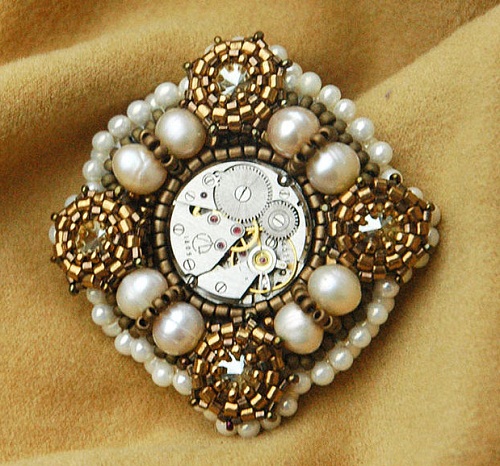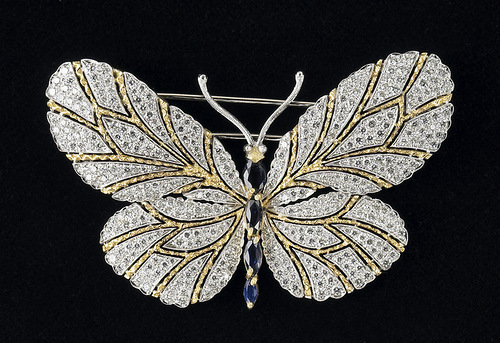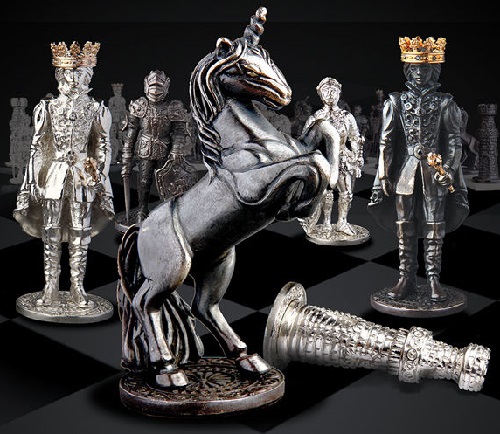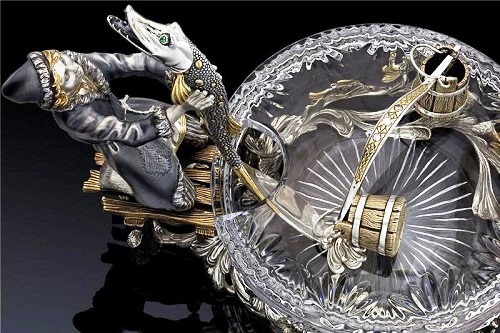In the jewelry Garden of Kunio Nakajima
In the jewelry Garden of Kunio Nakajima
The Museum of Applied Arts in Moscow exhibit the Collection of precious stones and metals, “In the Garden” by Japanese master Kunio Nakajima. It consists of more than 80 jewelry designs. Kunio Born in 1955 in the family of jeweler, Nakajima went his way from an apprentice to a simple artist to a jeweler of international fame. Prior to 1985, he studied the basics of jewelry design in the quiet Tamiya studio. Then, founded his own company “Nick’s Factory”, where he worked with many talented craftsmen. And after first success, he began to work on the creation of the original design. As a result, in 1996 he released his first collection.
Based on such characteristic features of the style “Art Nouveau” as asymmetry, instability of floral forms, and using his own vision of nature, he captured the landscape of fields and meadows of his native region Shinshu. In 2004, Nakajima opened a jewelry store in Europe. And European public appreciated the collection. In addition, jewelry designer exhibited his art works at the Brussels Exhibition «Les Orfevres», and in Japanese cities, such as Kitazawa and Nagano, and the museum Yamazaki Mazak.
Jewelry collection “In the Garden”, in particular, features enamel, made in ancient Japanese technique of “Sippo”. Meanwhile, in this technique worked classics of enameling of late XIX century. Among them – Yasuyuki Namikava and Sosuke Namikava, inspired by style and image of such great masters of the Art Nouveau, as Galle, Faberge , Tiffany, and Lalique. Besides, enamel – a technique in which Nakajima works – smelted by silicic acid, using other additives produced from silicon crystal.
In fact, contemporary art of enamel design by Kunio Nakajima indirectly refers to the origins of his own culture. In particular, the motifs and subjects variability of the world of classical Japanese style of ukiyo-e. According to autobiographical notes of Kunio Nakajima, proof of skill of the artist is an easy flight of thought and freedom needed to feel the invisible distance between the original and the copy.
In the jewelry Garden of Kunio Nakajima
- Ring and brooch. Jewelry by Kunio Nakajima
- Exquisite jewelry set of enameled floral motif necklace, earrings and ring
- Pansy brooch
- Raspberry brooch
- Amazing jewelry by Japanese master Kunio Nakajima
- Art Deco style necklace
- Hair comb with beautiful red berry decoration
- Hair pin
- Delicate jewelry from the collection “In the jewelry Garden”
- Pendant and necklace
- Work by Japanese jeweler Kunio Nakajima
- Nakajima jewelry
- Brooch by Kunio Nakajima
- Vase-brooch
- Summer Garden inspiration
- Creative jewelry pieces by Kunio Nakajima
- Swallow ring
- Blue bracelet by Kunio Nakajima
- Precious jewelry by Kunio Nakajima
- Grape necklace
- Garden inspired collection
- Artful jewelry by Nakajima
- High jewelry brooch by Kunio Nakajima
- Oak branch brooch
- Lalique inspired brooch
- Floral motif ring
- Charming rings
- Botanical jewelry – necklace
- Nature inspired jewelry. Kunio Nakajima
- Kunio Nakajima jewelry
- Pendant by Japanese master Kunio Nakajima
- Autumn gold leaves, pearl necklace
- A couple of swallows brooch
- Peacocks Art Nouveau necklace
- Leaves and flowers, elements of jewelry collection by Nakajima
- Nakajima jewelry
- Gold peacocks brooch and earrings/clips
- Two butterflies brooch
- Jewelry Garden by Japanese master Kunio Nakajima
- Tulip necklace
- Precious ring by Kunio Nakajima
- Gorgeous red rowan necklace
- From the collection “In the jewelry Garden”
- Botanical jewelry by Kunio Nakajima
- Japanese jeweler Kunio Nakajima
facebook.com/kunio.nakajima.1




















































